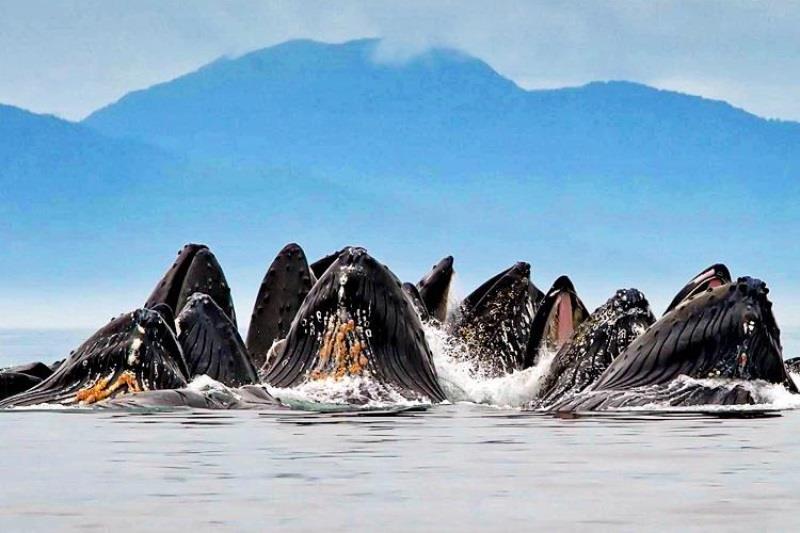
Wildlife viewing guidelines: Share the water for Labor Day
by NOAA Fisheries 4 Sep 2022 16:34 UTC

Humpback whales © NOAA Fisheries
Marine wildlife abounds
Alaska's waters are home to many charismatic and unique species—from Steller sea lions along the coast to migrating whales in our bays. Labor Day is one of the busiest times of year on the water. NOAA Fisheries would like to provide some helpful tips for enjoying our waterways and observing wildlife from a safe distance.
One of the most helpful tips: keep your distance so that your actions do not cause the animals you are viewing to change their behavior. Observing wildlife can be very rewarding, especially when you don't interfere with their daily activities. Keeping our distance and learning about the animals we share the Alaska waters and shores with are great ways to help protect them and enhance our enjoyment.
Whale SENSE
Whale watching responsibly is a great way to spend Labor Day! NOAA is a sponsor of the Whale SENSE Program. It educations and recognizes whale watching companies in Alaska that are conscientious of and promote responsible whale encounters.
Participating companies agree to:
- Stick to the regional whale watching guidelines
- Educate naturalists, captains, and passengers to have SENSE while watching whales
- Notify appropriate networks of whales in distress
- Set an example for other boaters
- Encourage ocean stewardship
Whale SENSE participants also complete annual training, evaluations, and a stewardship project. They ensure advertising follows responsible viewing practices, and follow the principles set forth in the program criteria. If you want a company to whale watch this Labor Day, remember to book with Whale SENSE companies
Boaters should never approach whales from the front. Boats should always stay at least 100 yards away from whales and even more if calves are present. If you encounter an entangled whale, keep a safe distance and report it to NOAA Fisheries Alaska Marine Mammal Stranding Network hotline immediately: (877) 925-7773.
Seals and sea lions in the water and on land
Harbor seals are another common species found onshore and in the water. They are a medium-sized seal with earholes, weigh between 180 and 285 pounds, and are usually light gray in color with dark spots or light rings on dark fur. They hunt and forage in the water and haul themselves out to rest, sleep, and pup on the shore.
Steller sea lions and northern fur seals are also regulars in Alaskan waters. Fur seals are an eared seal weighing between 140 and 600 pounds, with brown fur and large rear flippers. Steller sea lions are very large, brown, eared seals— the males weigh around 2,200 pounds! Again, it's always best to give these animals space and never disturb them.
Seal and sea lion viewing guidelines
- Stay at least 100 yards away when observing any marine mammal
- Keep dogs on leashes
- Give pups space
- Minimize wake, avoid abrupt changes in course or engine pitch, and avoid loud noises near seals when boating
- Minimize the use of PA systems
- Dispose of all trash appropriately
Marine mammal protection
All marine mammals are protected under federal law by the Marine Mammal Protection Act, and all are at risk of entanglement by marine debris. If you encounter a marine species in distress, entangled, or stranded, remember to call the NOAA Fisheries Alaska Marine Mammal Stranding Network at (877) 925-7773.
Have a wonderful Labor Day and stay safe!